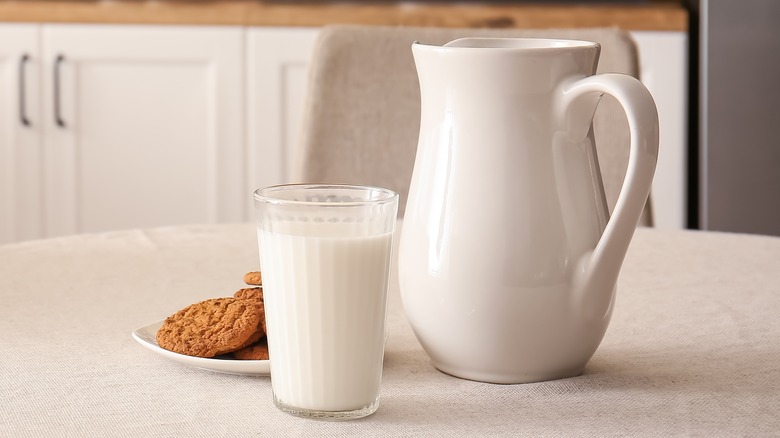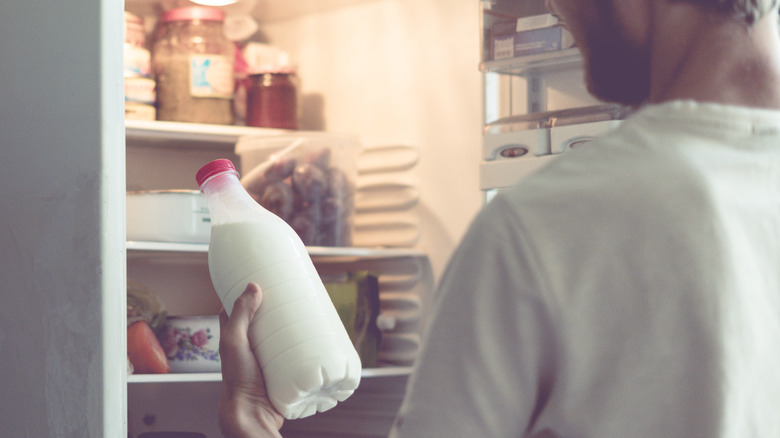How Long Milk Will Last Sitting Out On The Counter
Given how popular milk is as a drink for people of all ages, chances are high that you've left a jug of milk on your counter at some point and forgotten about it. Now, let's say you come back to it hours or even a day later. In this situation, even if your first instinct is to throw out the milk and assume it's already gone bad, just about everyone will briefly question: "Can I still drink it?"
Milk spoils faster than you might realize. If you left that jug of milk on the counter in the morning and remembered it in the afternoon, it's already past the point where you should toss it. According to the U.S. Office of Research Services (ORS), it's best not to leave milk at room temperature (usually between 68 and 72 F) for more than two hours. If you live in a place where it gets hotter than 90 degrees Fahrenheit, you've only got about an hour before it becomes unsafe to drink.
Despite undergoing pasteurization, milk can still collect bacteria when left out in your kitchen. The room temperature in your kitchen creates an ideal setting for these bacteria to thrive. After a few hours, the milk will start giving off an unpleasant odor. After a bit more time, it'll take on a sour taste, signaling that it has gone bad. If you leave it out long enough, the milk might even change from its normal white color to a sickly yellowish hue.
How to properly and safely store milk
After pouring the milk you need, simply pop the jug back into the fridge to keep it fresh. According to the Connecticut Department of Agriculture, your fridge should always stay below 40 degrees Fahrenheit to keep the milk safe (that's your cue to check the thermostat). This helps slow down bacterial growth in the milk, as noted by the USDA, giving you more time to use it before it goes bad. Just keep in mind that refrigeration won't kill bacteria as pasteurization does — it simply stops bacteria from multiplying quickly and ruining your milk within hours. If you follow all of the storage procedures correctly, the USDA says that you have about a week to use it all before the bacteria reach levels that make it unsafe to drink!
When placing the jug back in the fridge, consider where you put it. It's best to store the milk in the coldest part of the fridge, typically the lower shelves toward the back. Avoid placing it on the top shelves (remember, cold air sinks), and, most importantly, never store milk on the door shelves. The temperature on the door can fluctuate significantly as you open and close the fridge, even if only briefly. It's better to save those door shelves for items that don't spoil easily, like condiments.

